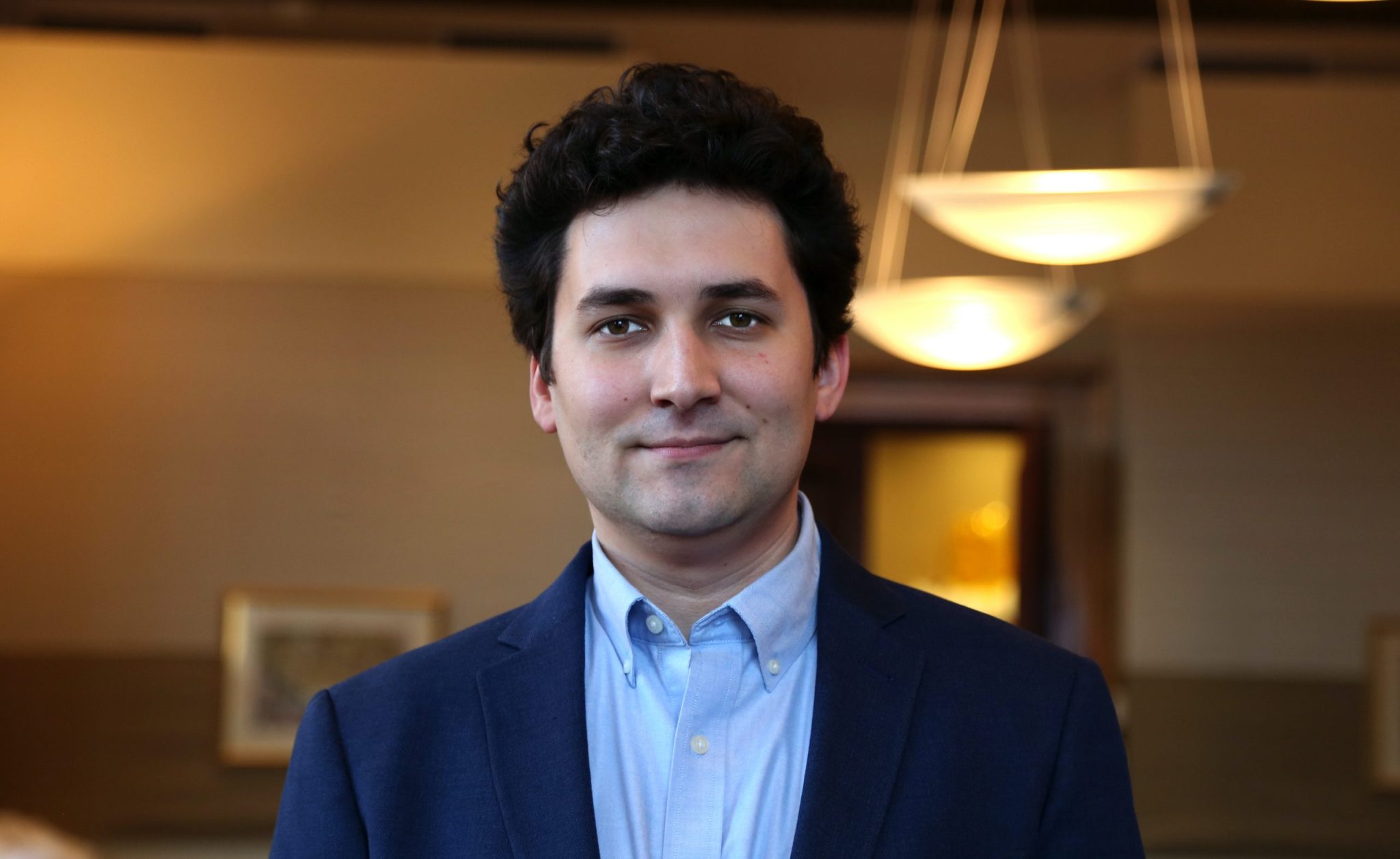Introduction
When Vladimir Putin announced last August that Russia had granted regulatory approval for Sputnik V, the world’s first coronavirus vaccine, it signaled—albeit perhaps prematurely—not only a potential turning point in the fight to end the coronavirus pandemic but also a new phase in the global contest to shape and at times manipulate information around the virus and its origins, treatments, and potential cures.
That vaccines have become the latest flashpoint in the coronavirus-era battle of narratives is hardly surprising. Since the outbreak of the virus forced much of the world into lockdown last March, Russia, China, and Iran have used a combination of public diplomacy, propaganda, and overt and covert disinformation campaigns to portray their respective responses to the pandemic as superior to those of the West.
Vaccine diplomacy is a natural extension of these efforts. The ability to develop and distribute an effective vaccine is, like mask diplomacy before it, an effective tool for autocrats to blunt domestic and international criticism and to showcase the competency and generosity of their respective governments. But with more than a half-dozen vaccines in early or limited use, vaccine narratives are more than an exercise in self-promotion; they are a tool to open enormous diplomatic and economic opportunities for vaccine-producing countries. The stakes are therefore elevated, as attempts to win the hearts, minds, and deltoids of global publics—particularly those in developing countries—is as much about market dominance as it is about soft power.
To date, much has been written about Russia and China’s use of information operations to manipulate coronavirus narratives, including around vaccines. These reports have largely relied on specific examples of Russian and Chinese actors promoting stories that have toed a fine line between sensationalism and outright disinformation. The focus on disinformation is understandable; however, this approach risks missing the steady drumbeat of factual but, in aggregate, misleading coverage that can shape public opinion over time. It has also allowed those countries and their state media outlets to claim that their reporting has been misrepresented. For example, in a statement made to The New York Times about allegations of disingenuous vaccine reporting by Russian state media outlets in Latin America, RT alleged that the stories referenced in the Times’ article represented “a cherry-picked fraction of our coverage” and did not contain “any inaccuracies or falsehoods.”1
To test these and other claims, this report analyzes more than 35,000 vaccine-related messages captured by ASD’s Hamilton 2.0 dashboard, an open-source tool that collects and displays outputs from Russian, Chinese, and Iranian diplomats, government officials, and state media outlets on Twitter, YouTube, and state-sponsored news websites. Although this report highlights vaccine-related narratives promoted across multiple platforms, comparative analysis was conducted on Twitter data collected during a three-month period commencing on November 9, 2020, the day Pfizer-BioNTech announced it had successfully completed its phase 3 trial. The studied time frame (November 9, 2020-February 9, 2021) also covers the announcements of several major vaccine developments, including the European Union’s decision to authorize the use of the Moderna and Oxford-AstraZeneca vaccines and China’s approval of its homegrown Sinovac and Sinopharm vaccines.
During the studied period, ASD collected more than 455,757 tweets from Russian, Chinese, and Iranian officials and state media outlets. Of those tweets, 29,601 contained the text “vaccin*” (a search term that captures multiple iterations of the words “vaccine” and “vaccination”), representing a nearly threefold increase in vaccine-related coverage compared to the three months prior to Pfizer’s announcement. (A search for vaccin* returned 13,250 hits been August 9, 2020 and November 9, 2020 versus 33,702 hits between November 9, 2020 and February 9, 2021.) Researchers also queried the manufacturers of the three EU-approved vaccines (Pfizer, Moderna, and Oxford-AstraZeneca),2 as well as Russia’s Sputnik V vaccine and China’s Sinovac and Sinopharm vaccines. In order to provide a baseline for comparison, ASD also analyzed over 10,000 vaccine-related tweets from a control group of global media outlets.
This report covers the two-prongs of each country’s external messaging campaigns around vaccines: promotion of domestically produced vaccines, and coverage of vaccines produced by other countries. Within those broad categories, particular attention was given to analyzing the most salient themes, the most influential accounts and outlets, the most targeted countries, and the vaccines that received the most and least positive coverage. Importantly, this paper only covers overt messaging, meaning that notable instances of disinformation from covert sites were not analyzed.
Key findings
- While there were few instances of any studied country promoting verifiably false information about vaccines, reports of safety concerns related to the administration of certain Western-produced vaccines were often sensationalized while downplaying or completely omitting key contextual information. For example, Iran’s Arabic-language Fars News Agency tweeted that the Pfizer vaccine “kill[ed] six people in America,” omitting (and never correcting) that four of the six people who died during the vaccine trial had received a placebo and that authorities determined there was no causal connection between the vaccine and the deaths of the other two participants.
- Of the three COVID-19 vaccines authorized for use by the European Commission, the Pfizer vaccine was mentioned more often by Russian, Chinese, and Iranian accounts than the Moderna and AstraZeneca vaccines combined.
- Pfizer received by far the most unfavorable coverage of any vaccine, particularly from Kremlin-funded outlets and Iranian state media and government accounts. Of the 50 most-retweeted tweets mentioning Pfizer posted by Russian state media outlets, 43 (86 percent) mentioned either an adverse reaction to the vaccine (including deaths) or negative information about the company itself. In Iranian government and state media tweets, 92 percent of mentions of Pfizer were negative. But the notion that Russian, Chinese, and Iranian diplomats and state media outlets seek to disparage and undermine Western vaccines writ large is not entirely accurate, as coverage of Moderna’s vaccine was mixed and reporting on Oxford-AstraZeneca’s vaccine was largely neutral or positive.
- Russia was the most likely of the three studied countries to suggest linkages between the Pfizer vaccine and the subsequent deaths of vaccine recipients. Of the 209 tweets from Russian, Chinese, and Iranian accounts that mentioned Pfizer and the words “die,” “dead,” or “death” in the same tweet, 111 (53 percent) were from Russian state media outlets.
- It is unclear why Pfizer received more negative coverage than Moderna, though possible explanations include: a) they were the first Western vaccine to be approved and therefore were viewed as the primary competition to Russian and Chinese vaccines, b) there have been safety concerns that have popped up that made them an easy target for mal-information campaigns, and c) they are simply a more globally recognizable U.S. brand than Moderna and thus served as a better target for anti-Big Pharma campaigns.
- Russia’s coverage of Oxford-AstraZeneca took a noticeable U-turn after a December announcement of a deal to test a combination of the Oxford-AstraZeneca and Sputnik V vaccines. After the announcement, there was an increase in positive reporting and a reduction in negative coverage of AstraZeneca in Russian diplomatic and state media outputs.
- Russia and China aggressively promoted their own vaccines, but not one another’s. In Russian tweets that mentioned a vaccine by name, just over 6 percent mentioned one of the two Chinese vaccines. Similarly, in Chinese tweets that mentioned a vaccine by name, just under 3 percent mentioned Sputnik V. By comparison, our control group of global media accounts mentioned Sputnik V in 6.5 percent and the two Chinese vaccines in over 8 percent of tweets that mentioned a vaccine by name.
- Russian, Chinese, and Iranian state media outlets all promoted the theory that “mainstream” or “Western” media outlets provided biased coverage of Russian and Chinese vaccines and ignored safety concerns related to Western vaccines. These claims were not supported by a review of tweets from our control group of global media outlets. For example, of the 23 tweets from U.S.-government funded Radio Free Europe/Radio Liberty that mentioned Sputnik V, only 4 (17 percent) were negative. Major incidents that the western press was accused of ignoring—most notably, deaths in a Norwegian nursing home after the administration of the Pfizer vaccine—were covered by surveyed Western outlets, though with far more context.
- Iran’s coverage of Pfizer and Moderna took a decidedly more negative turn after Ayatollah Khamenei’s decision on January 8, 2021 to ban the importation of all vaccines produced in the United States and United Kingdom. Despite the ban, Iran continues to move forward with plans to import AstraZeneca, a contradiction that state media justified by claiming that the Oxford-AstraZeneca vaccine is Swedish, not British. Relatedly, AstraZeneca’s coverage was entirely positive, indicating that Iran’s coverage is motivated by need as much as geopolitics.
- Twitter accounts affiliated with Russian and Chinese embassies in countries that either approved or were in the process of approving Russian or Chinese vaccines gained more followers and received substantially more engagement than diplomatic accounts in other countries.
- On a per-tweet basis, vaccine-related tweets from the Russian Embassy in Mexico received the most retweets and likes of the more than 900 accounts surveyed—outpacing state media accounts with a hundred times more followers. Mexico granted emergency approval for the Sputnik V vaccine in early February.
Methodology
Data was retrieved using ASD’s Hamilton 2.0 dashboard, which continuously collects data on more than 900 Twitter accounts belonging to individuals or entities connected to Russian, Chinese, or Iranian government entities or state-funded media outlets. The dashboard tracks accounts that primarily target foreign audiences, namely embassies, consulates, foreign ministries, ambassadors, key government figures, and international media outlets and their affiliated channels and programs. All non-English language tweets are translated into English using Microsoft’s cognitive services.
In addition, ASD captures data on five English-language Chinese state media websites,3 four English-language Russian state media websites,4 and three English-language Iranian websites,5 as well as two English-language Chinese6 and Russian state media7 YouTube channels. Because the website and YouTube data captured on the Hamilton dashboard is exclusively in English, this report primarily focuses on Twitter data, which is more global in nature and thus more representative of each country’s international outreach.
Between November 9, 2020 and February 9, 2021, the dashboard collected more than 559,000 tweets, 2,700 videos, and 83,000 articles. From that dataset, we retrieved all tweets, YouTube videos, and articles that contained the text “vaccin*” in the tweet, video description, or article excerpt. In total, there were 33,702 tweets, 226 videos, and 6,978 articles containing the queried text, representing, respectively, roughly 6 percent, 8 percent, and 8 percent of the total content posted to Twitter, YouTube, and state-sponsored websites during the studied period. Due to the large sample size, particular attention was paid to tweets and articles that contained the words “Pfizer,” “Moderna,” “AstraZeneca,” “Sinopharm,” “Sinovac,” or “Spuntik V.” For each vaccine, human coders used sentiment analysis to code the 50 tweets that received the most retweets on Twitter.
To provide a basis for comparison, ASD also collected and analyzed data from 15 Twitter accounts connected to English-language global media outlets, including the BBC, CNN International, Al Jazeera, and France 24.8 During the specified period, our global media group tweeted more than 119,704 times. Of those tweets, roughly 8.5 percent (10,255 tweets) contained the term “vaccin*,” which was broadly consistent with the percentage of vaccine coverage that appeared in tweets from Russian, Chinese, and Iranian state media outlets and government entities and officials.
What were the most influential accounts?
Of the networks of Twitter accounts monitored on the Hamilton dashboard, accounts connected to Russian state media outlets were the most active, liked, and retweeted during the studied period (November 9, 2020-February 9, 2021). RT Español was—by a significant margin—the single most-engaged with account, which is consistent with data collected throughout 2019 and 2020, regardless of the topic. Of note, not a single Iranian government or state media account appeared among the ten most influential accounts.

Figure 1: Top 10 accounts by tweets, likes, and retweets between November 9, 2020 and February 9, 2021. (Source: Hamilton 2.0)
When looking only at vaccine-related tweets during this period, the rankings were largely consistent with the overall activity, with a few notable exceptions. Russia’s @sputnikvaccine account—a Russian government account created in August 2020 to promote the Russian-produced vaccine—was among the five most engaged-with accounts and has gained more than 130,000 followers in just six months. The other notable addition was the Russian Embassy in Mexico’s account (@embrusiamexico), which was the only embassy or diplomatic account to register among the ten most liked and retweeted accounts.
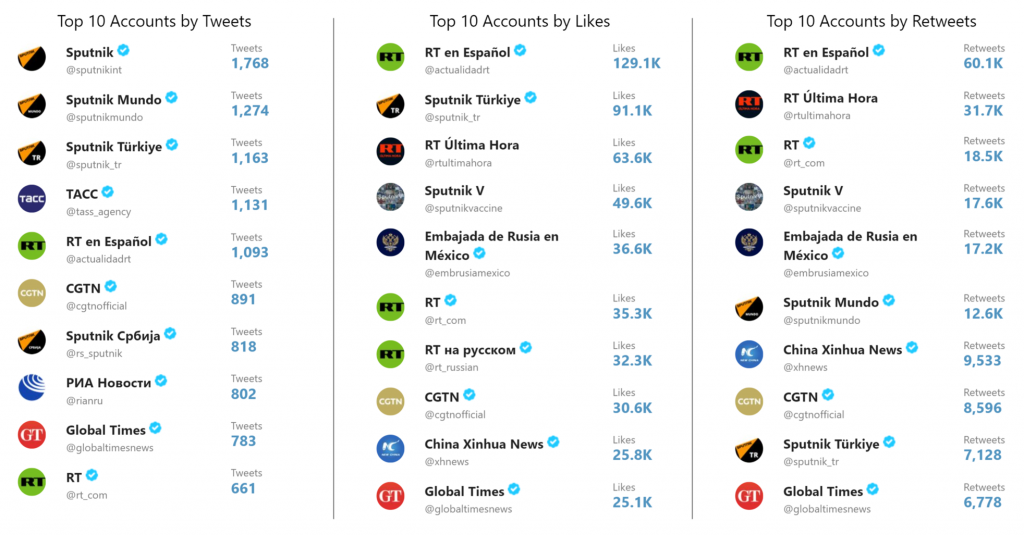
Figure 2: Top 10 accounts by tweets, likes, and retweets in tweets mentioning “vaccines” or “vaccinations” between November 9, 2020 and February 9, 2021. (Source: Hamilton 2.0)
The fact that the Russian Embassy in Mexico received the fifth most likes and retweets is remarkable given that the embassy only posted 46 tweets mentioning vaccines during the studied period. On a per-tweet basis, the embassy’s vaccine-related tweets received the most engagement of any monitored account—roughly 795 likes and 374 retweets per post—far more than state media accounts with 100 times more followers. Likely buoyed by its vaccine messaging, the @embrusiamexico account saw the third largest percent gain in followers (70 percent) among monitored Russian accounts during the studied period.

Figure 3: The largest percent change in followers among Russian state media and diplomatic accounts between November 9, 2020-February 9, 2021. The followers gained chart does not include the @sputnikvaccine account, which was added to ASD’s account list in January, meaning our system did not record its follower counts in November or December. From January to March 1, 2021, the Sputnik account saw a more than 200 percent gain in followers, likely making it the account with the most followers gained in the studied period.
The surge in interest in the Russian Embassy in Mexico’s twitter activity took place against the backdrop of the Mexican government’s decision to approve and purchase the Sputnik V vaccine for use within the country. Perhaps unsurprisingly, the Twitter account of the Russian Embassy in Argentina (@embrusiaenarges), the first Latin American country to purchase and distribute the Sputnik vaccine, also saw a significant spike in followers (34 percent during the studied period). In tweets mentioning vaccines, the Russian embassy accounts in Mexico and Argentina also received the most likes and retweets of any Russian embassy account, and they were among the four most liked and retweeted accounts across Russia’s entire network of government and diplomatic accounts. Importantly, neither account was among the ten most engaged with Russian embassy accounts in the three months before the studied period.
There was a clear trend of Russian diplomatic accounts that were affiliated with countries that were buyers (or potential buyers) of the Sputnik V vaccine receiving more engagement than diplomatic accounts in countries that were not viewed as possible markets. This was especially true in Latin America. Four of the ten most retweeted diplomatic accounts targeted Spanish-speaking audiences in Latin America, and the Ministry of Foreign Affairs’ Spanish-language Twitter account was liked and retweeted more than any other Russian MFA account.
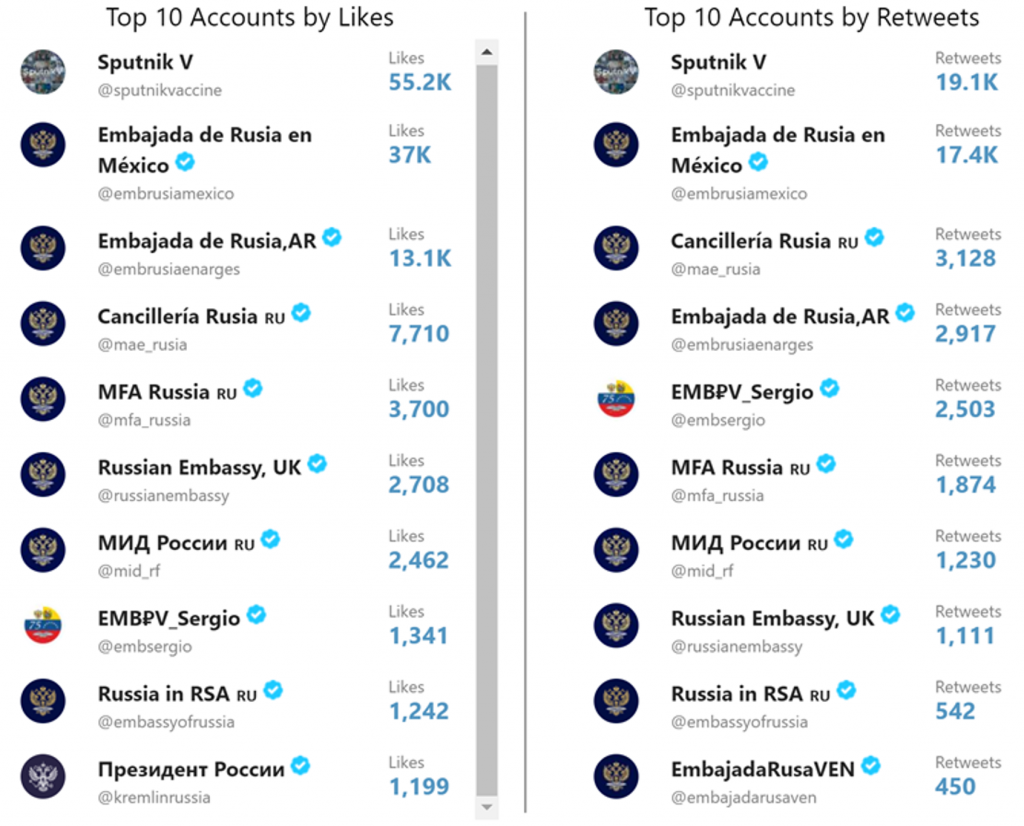
Figure 4: Russian government and diplomatic accounts that received the most likes and shares in tweets mentioning vaccines or vaccinations. (Source: Hamilton 2.0)
Similarly, Twitter accounts affiliated with Chinese embassies and diplomats based in countries that were potential recipients of one of the two Chinese vaccines saw substantially more engagement than other diplomatic accounts. The Chinese embassy account in Brazil, for example, was retweeted and liked more often than any other official government account in tweets referencing vaccines. Again, this is likely not a coincidence. In January, Brazil reported disappointing efficacy results in trials of the Sinovac vaccine. This sparked an aggressive Chinese messaging campaign that culminated with Brazil’s approval of the Sinovac vaccine in January.
While China’s embassy in Brazil is typically one of the more prominent Chinese embassy accounts, in the three months prior to the studied period, it ranked as only the sixth most liked account and was not among the ten most retweeted accounts. Other diplomatic accounts whose vaccine-related posts garnered more engagement than usual were accounts for China’s ambassadors to the Maldives (Amb. Zhang Lizhong), Egypt (Amb. Liao Liqiang), and Pakistan (Amb. Nong Rong), as well as the Chinese embassy in Peru. All four countries were recipients of Chinese vaccines, either through government contracts, aid, or a combination of the two.

Figure 5: Chinese government and diplomatic accounts that received the most likes and shares in tweets mentioning vaccines or vaccinations. Not pictured (or cut off) are @AmbLiuXiaoMing, @libijian, and @ambnon. (Source: Hamilton 2.0)
The most engaged with vaccine-related tweets from Iranian government officials came from the various accounts connected to Ayatollah Ali Khamenei; although, the most engaged with account was Kianush Jahanpur, the head of public relations at Iran’s ministry of health. This is typical, though it also likely reflects the fact that Iran has not been a significant player in the global vaccine race. Iran did not launch the first human trial of its homegrown COVIran vaccine until late December (months after the other studied countries), meaning that for much of the studied period, it simply did not have a product to market.

Figure 6: Iranian government and diplomatic accounts that received the most likes and shares in tweets mentioning vaccines or vaccinations. (Source: Hamilton 2.0)
What countries were the most targeted?
Unsurprisingly, Russia, China, and Iran were the countries most mentioned by their own government officials and state media outlets in vaccine-related posts. There were clear differences, however, in the foreign countries most mentioned in state media outputs versus those most mentioned in tweets by government officials and diplomatic channels. In both tweets and website articles, monitored state media outlets from each of the three studied countries mentioned their strategic competitors—namely, the United States, the United Kingdom, and the EU—far more often than “friendly” countries or those that were viewed as potential markets for their vaccines. Although this is due in part to the audiences targeted by state media outlets (for example, Russia has several outlets targeting audiences in the United States and none that exclusively target Hungary), it also likely reflects state media’s role as a tool to denigrate adversaries rather than court allies.

Figure 7: From left to right, countries most mentioned in vaccine-related articles published by English-language Russian, Chinese, and Iranian state media outlets, respectively.

Figure 8: From left to right, countries most mentioned in vaccine-related tweets by Russian, Chinese, Iranian state media accounts on Twitter, respectively.
Russian and Chinese government officials and diplomats, however, were far more likely to promote narratives about countries that were early adopters of their respective vaccines. Of the ten most mentioned countries by Russian government and diplomatic accounts, six (Russia, Argentina, Hungary, Mexico, Serbia, and United Arab Emirates) approved the Sputnik V vaccine for use during the studied period. Two other countries (Brazil and India) were undergoing clinical trials.

Figure 9: The most mentioned countries in tweets with the text “vaccin*” from Russian diplomatic and government accounts.
Similarly, in tweets mentioning vaccines, nine of the ten most mentioned countries or special territories by Chinese diplomats and government officials (including China and Hong Kong, which ASD’s dashboard categorizes as a unique entity) were countries that were recipients of one of the two Chinese vaccines. Besides celebrating positive developments and highlighting China’s global goodwill gestures, officials also pushed back against negative reporting in targeted countries—particularly Brazil.

Figure 10: The most mentioned countries in tweets with the text “vaccin*” from Chinese diplomatic and government accounts.
The differences between countries mentioned in state media outputs and those mentioned in diplomatic tweets reflects broader differences in messaging strategies, with diplomats more focused on pushing positive narratives, and state media used to denigrate adversaries or potential competitors— though there were plenty of examples that contradict this broad generalization.
As noted in the previous section, the absence of a viable domestic vaccine in Iran meant that Iranian diplomats were less strategic in their outreach. The one notable exception was the promotion of an accord signed in early January with Cuba to cooperate on the development of a vaccine. Other countries mentioned did not appear to be directly related to Iran’s efforts to produce or distribute its vaccines; although, Russia, China, and the United Kingdom were suppliers of vaccines to Iran. (As discussed later in this paper, Iranian state media outlets have promoted the idea that the Oxford-AstraZeneca vaccine is Swedish, not British. This messaging campaign started after the supreme leader announced a ban on vaccines from the United States and the United Kingdom.)
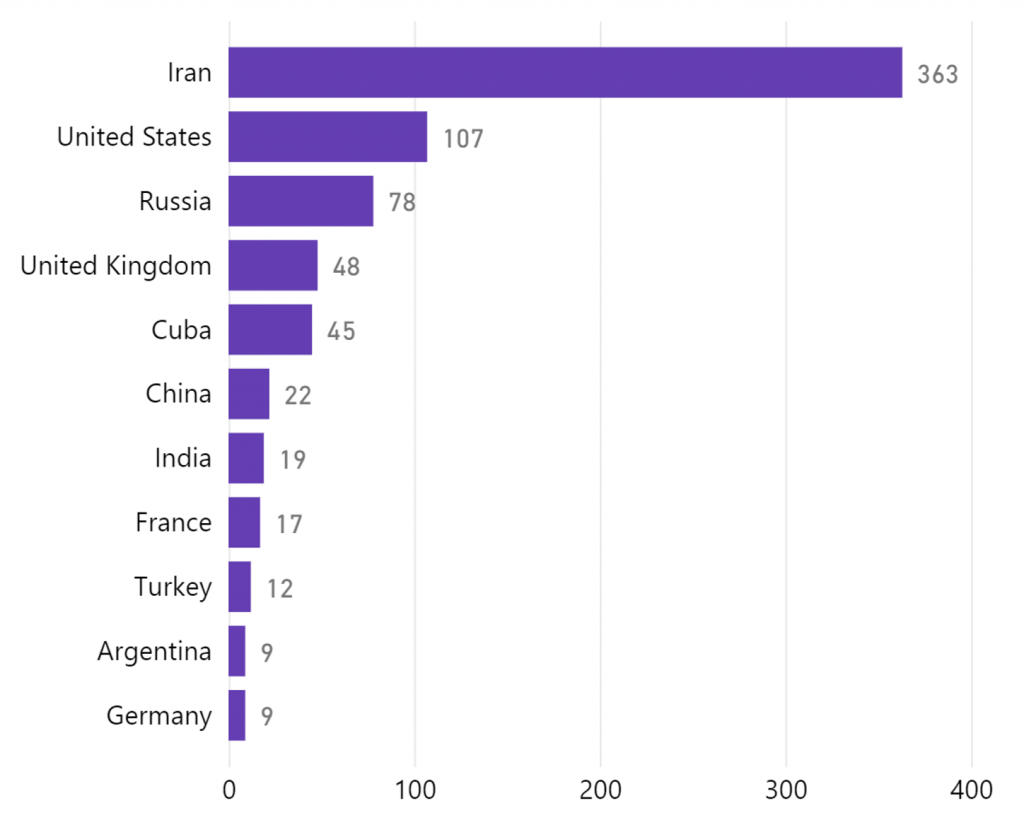
Figure 11: The most mentioned countries in tweets with the text “vaccin*” from Iranian diplomatic and government accounts.
What vaccines were the most mentioned?
Researchers queried tweets mentioning “Pfizer,” “AstraZeneca,” “Moderna,” Sinovac,” “Sinopharm,” and “Sputnik V” between November 9, 2020 and February 9, 2021. A comparative analysis of mentions of the three EU-approved vaccines proved highly reliable, as a manual review of the vaccine-related dataset revealed few false positives or negatives when querying those brand names. Searching for the two Chinese-produced vaccines—Sinovac and Sinopharm—turned up a few false negatives, as tweets occasionally referenced “Chinese vaccines” (or some variation thereof) without referencing either manufacturer by name. Similarly, Russia’s Sputnik V vaccine was occasionally indirectly referenced; although, the far bigger challenge was isolating tweets mentioning the Sputnik V vaccine from mentions of the more than two dozen Sputnik-branded Russian state media outlets (for example, @sputnikint and @sputnikmundo). Because of the high number of false positives when querying “Sputnik,” researchers limited their queries to specific mentions of “Sputnik V” or “Sputnik-V.” This almost certainly resulted in an undercount of the total mentions of the Sputnik V vaccine.
Sputnik V, however, was still the most mentioned of the six surveyed vaccines by Russian, Chinese, and Iranian accounts, though 94 percent of those mentions came from Russian entities. Russia’s concerted effort to promote its own vaccine skewed the total results, as Sputnik V was mentioned far less often by Chinese and Iranian accounts.

Figure 12: Total mentions of specific vaccines in tweets by Russian, Chinese, and Iranian state media and government/diplomatic accounts between November 9, 2020-February 9, 2021. Global outlets were surveyed for comparative purposes and were not included in the total mentions column.
Of the 4,194 tweets that mentioned one of the three vaccines produced in the United States or Europe, 60.5 percent mentioned Pfizer. In total, Pfizer was mentioned in nearly a quarter (24 percent) of all Russian, Chinese, and Iranian tweets mentioning one of six surveyed vaccines—a substantial figure considering Russia and China’s efforts to promote their own vaccines. Pfizer was also mentioned by each of the three studied countries more than AstraZeneca and Moderna combined. Of note, Pfizer received by far the most mentions of any of the six surveyed vaccines in tweets from our control group of global media outlets, suggesting that the focus on Pfizer was not unique to the three studied countries.
Unsurprisingly, Russian and Chinese government officials and state media outlets were far more likely to mention their own domestically produced vaccines than those produced elsewhere. They also produced the vast majority of the total mentions of their respective vaccines. Over 57 percent of official Russian tweets that referenced a specific vaccine mentioned Spuntik V (as previously mentioned, the true percentage was likely higher), and Russian accounts provided 94 percent of the total mentions of the Sputnik V vaccine in tweets from Russian, Chinese, and Iranian accounts. Similarly, monitored Chinese accounts mentioned Sinovac or Sinopharm in 60.5 percent of their tweets referencing one of the six vaccines, and Chinese tweets accounted for 93 percent of the total mentions of those two vaccines. Iran’s homegrown vaccine, COVIran, was mentioned 24 times by Iranian accounts (and once by a Russian account), but it was not included in the survey due to the small amount of overall coverage.
Surveyed global media outlets provided far more coverage of the three Western vaccines than those produced in Russia or China, with Pfizer, AstraZeneca, and Moderna ranking, respectively, as the first, second, and third most mentioned vaccines. Only 15 percent of surveyed global media accounts mentioned Sputnik V, Sinopharm, or Sinovac, with Sputnik V receiving the most coverage.
These findings both reinforce and cut against Russian and Chinese narratives that their vaccines are being “ignored” by the “mainstream” or Western media. While surveyed accounts connected to global media outlets provided far less coverage of Russian and Chinese vaccines than Western ones, non-Western vaccines were also largely ignored by China, Russia, and Iran—excluding, of course, the coverage they provided of their own vaccines. China, for example, mentioned Sputnik V in only about 3 percent of their tweets that referenced one of the six surveyed vaccines by name, while Russia mentioned the two Chinese vaccines combined in roughly 6 percent of their tweets. Iran, despite the limited number of tweets mentioning its own nascent vaccine efforts, also mentioned the two Chinese vaccines in only 3 percent of their tweets. Although Iran provided more coverage of Sputnik V (89 total tweets), it mentioned Pfizer more than twice as often (182 total tweets). It therefore appears that the lack of coverage afforded to Chinese and Russian vaccines was less a product of anti-Russian or anti-Chinese sentiment than a universal feature of global media coverage.
What vaccines received the most and least positive coverage?
Given the challenge of manually coding several thousand tweets and articles, ASD manually reviewed up to 50 of the most retweeted tweets from each of the studied countries that mentioned one of the six surveyed vaccines (in a few cases, there were fewer than 50 total tweets from a given country mentioning a specific vaccine). While this approach allowed us to isolate the most popular content, it is certainly possible that the nature of Internet virality created a sample that skewed more negative, as studies have shown that negative, false, or sensationalized content is more likely to be shared than dry, factual reporting.
Because coders struggled to differentiate between positive and neutral mentions of vaccines, coders labelled each reviewed tweet as either positive/neutral or negative. Negative mentions included tweets and articles that referenced deaths or other adverse reactions to the vaccine, as well as content that criticized the manufacturer for the price of their vaccine, failing to meet supply demands, or other related issues. If tweets criticized coverage of a certain vaccine (for example, Russian news articles claiming Western media bias against Sputnik V), those tweets were categorized as positive/neutral, as they were determined to be in support of the mentioned vaccine. Tweets that suggested that another vaccine was superior to the queried vaccine were coded as negative.
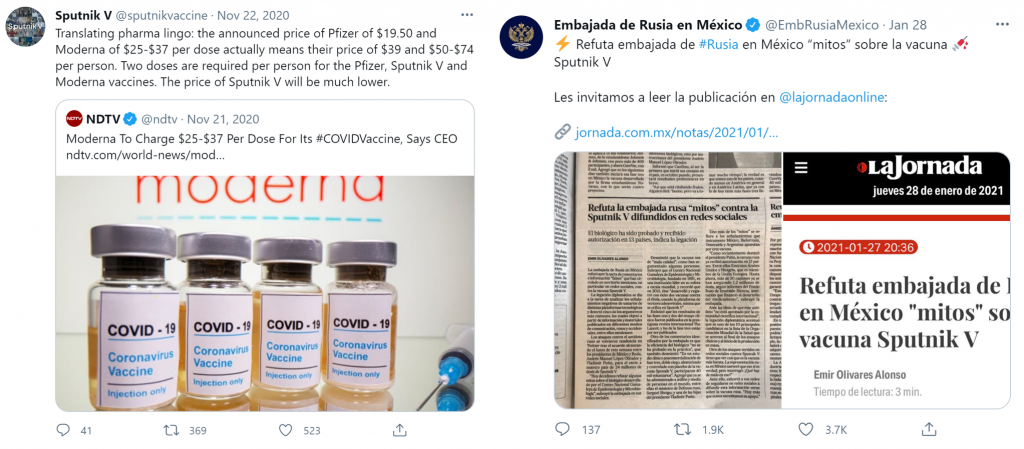
Figure 13: On the left, an example of a tweet that was coded as negative for Moderna and Pfizer and neutral/positive for Sputnik V. On the right, a tweet criticizing “myths” about Sputnik V that was coded as neutral/positive for Sputnik V.
Finally, researchers ran Boolean searches for each studied vaccine and the words “die*,” “death*,” or “dead” to identify posts that implied a connection between the administration of the vaccine and the subsequent death(s) of vaccine recipients. In cases where the mention of a vaccine and the mention of a death appeared unrelated (as in the tweet below), those tweets were removed from the dataset.
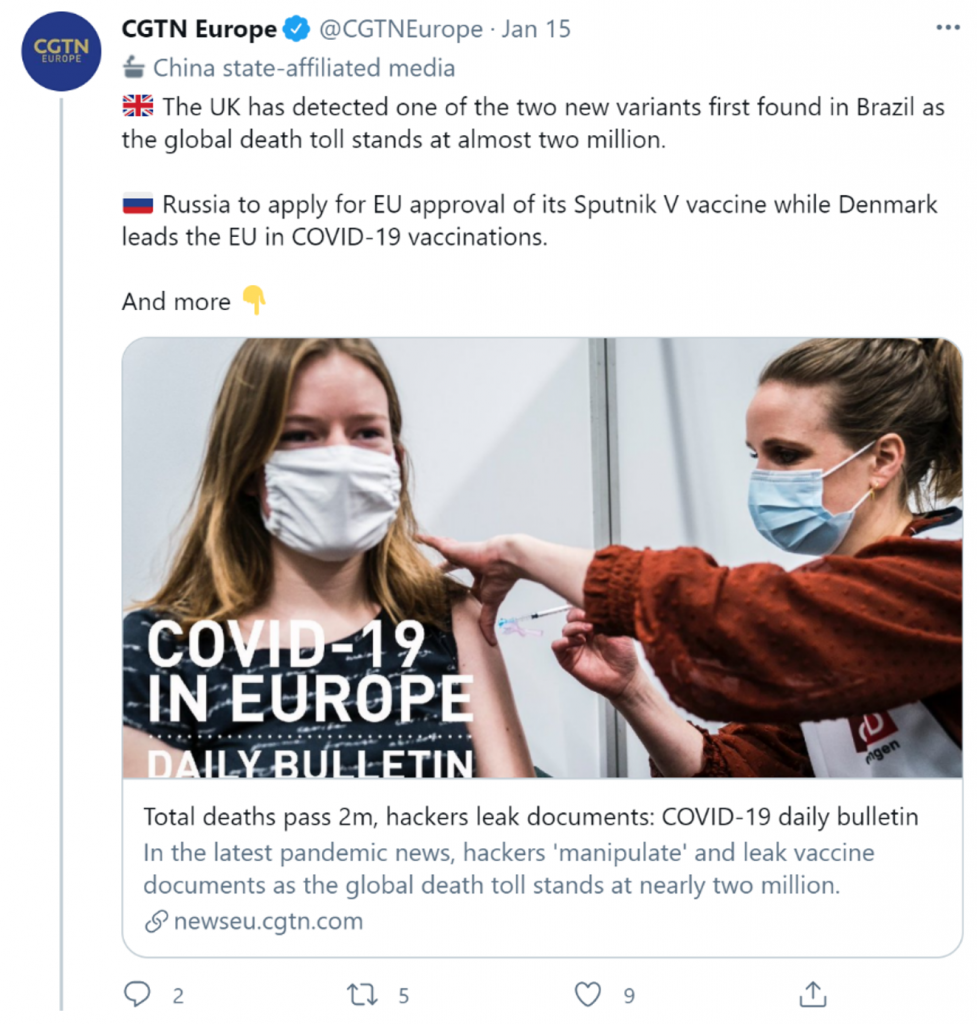
Figure 14: Example of a tweet that was removed from our survey of tweets that suggested a causal connection between the administration of a vaccine and the death of a recipient or recipients.
Russia’s coverage of specific vaccines
Overall, Russian coverage of coronavirus vaccine developments was factual. However, there was a strong emphasis on promoting positive news related to Russia’s Sputnik V vaccine, and negative news related to the administration, distribution, or cost of Western vaccines.
Of the three studied countries, Russia provided by far the most negative coverage of Western vaccines, with a remarkable 86 percent of surveyed Russian tweets mentioning Pfizer and 76 percent of tweets mentioning Moderna coded as negative. Russia’s coverage of AstraZeneca was more neutral (only 28 percent of stories were negative). In total, however, Western vaccines received more than eight times more negative coverage than vaccines produced in Russia or China.
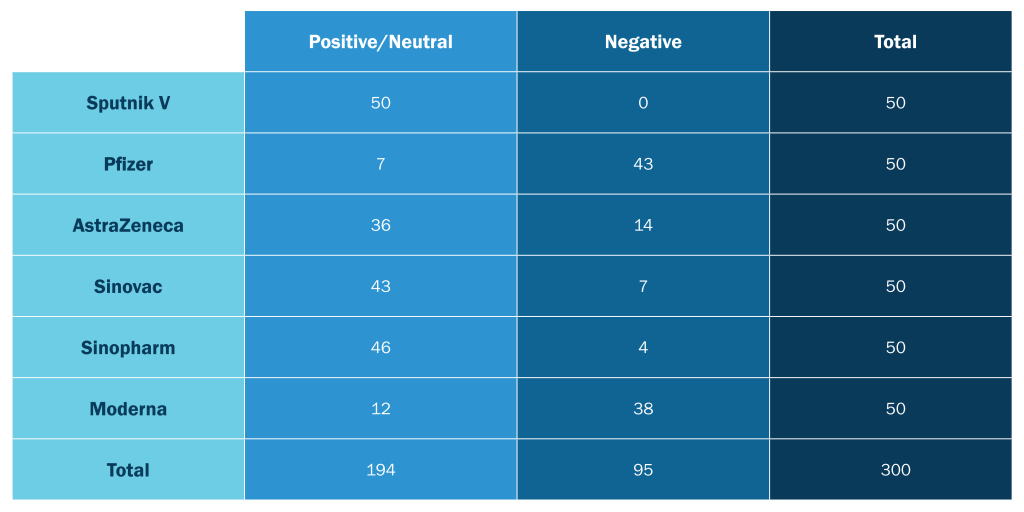
Figure 15: The number of tweets coded as positive/neutral and negative from Russian-affiliated accounts mentioning one of the six surveyed vaccines.
The emphasis on denigrating Pfizer is likely due in part to its status as the first vaccine besides Sputnik V to see mass use, resulting in a greater potential threat to Sputnik’s market dominance. The following chart shows the seven most retweeted Russian tweets mentioning Pfizer during the studied period, all of which highlighted adverse reactions to the vaccine or allegations of double standards in media coverage.
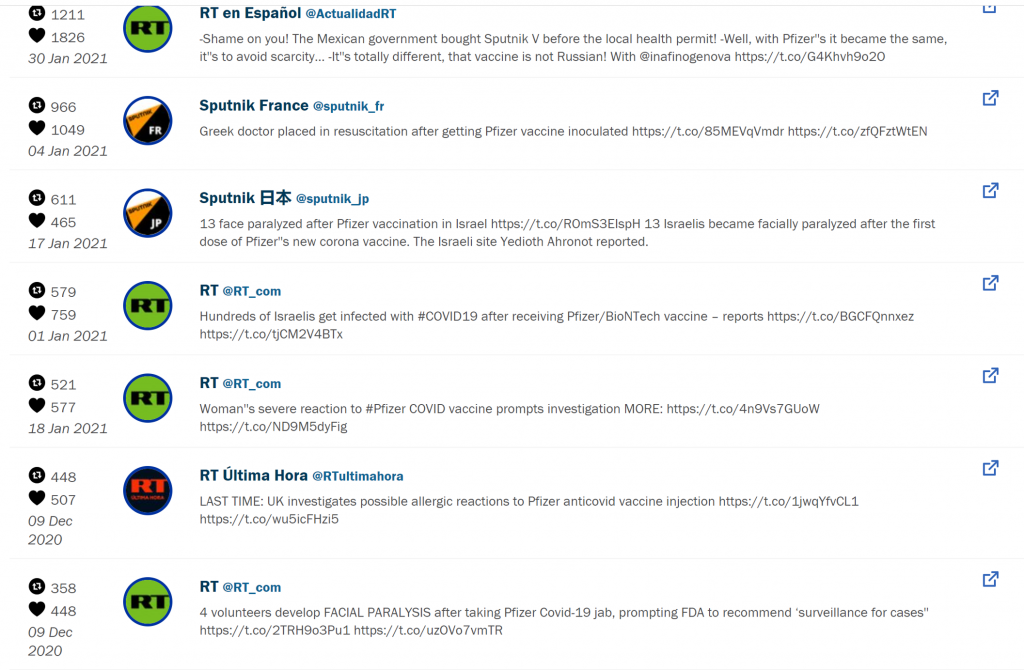
Figure 16: The most retweeted Russian tweets mentioning Pfizer during the studied period.
Russian state media outlets and diplomats were also the most likely of the three studied networks to highlight deaths of those who had received the Pfizer vaccine. Russia accounted for 59 percent of the 181 tweets from Russian, Chinese, and Iranian accounts that mentioned the death of a recipient or recipients of the Pfizer vaccine.
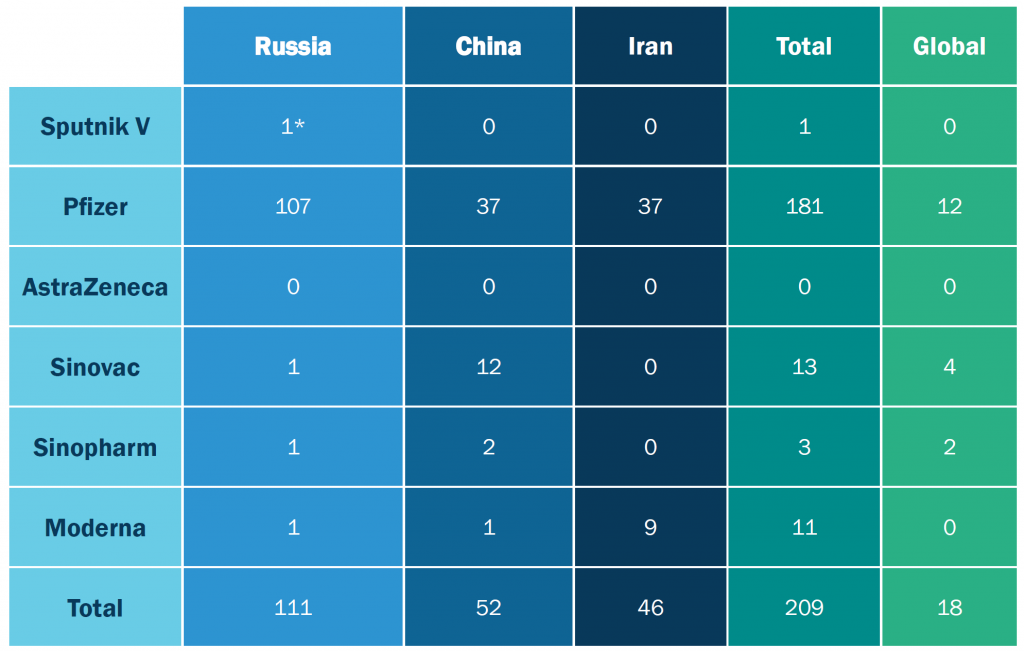
Figure 17: Vaccines mentioned by each country in tweets containing the text “die*,” “death*,” or “dead.” *The one reference in a Russian state media tweet of the death of a recipient of the Sputnik V vaccine referred to the claim as a “lie.”
Again, these reports were factual, in so far as they were based on real events. However, reports that implied that there was a causal connection between Pfizer and the subsequent deaths of vaccine recipients often downplayed or completely omitted key contextual information, like subsequent findings that the deaths were unrelated to vaccinations. At times, these details and appropriate caveats were included in the body of reports, but headlines (and associated tweets) were often wildly misleading.

Figure 18: Examples of Russian state media coverage implying a connection between vaccines and deaths of vaccine recipients. Note the use of all caps to highlight the word “DIES” in the RT tweet.
In some instances, Russian media outlets provided disclaimers that contradicted their own headlines. For example, in a February 1, 2021 article suggesting a link between the Pfizer vaccine and the deaths of seven nursing home residents in Spain, RT provided an “additional context” sub-header that, in essence, highlighted the fact that their own headline was misleading. While providing context allows RT to maintain a veneer of journalistic credibility, research has shown that nearly 60 percent of those who share articles on social media never click on the actual link, underscoring the outsized importance of headlines in shaping public opinion.
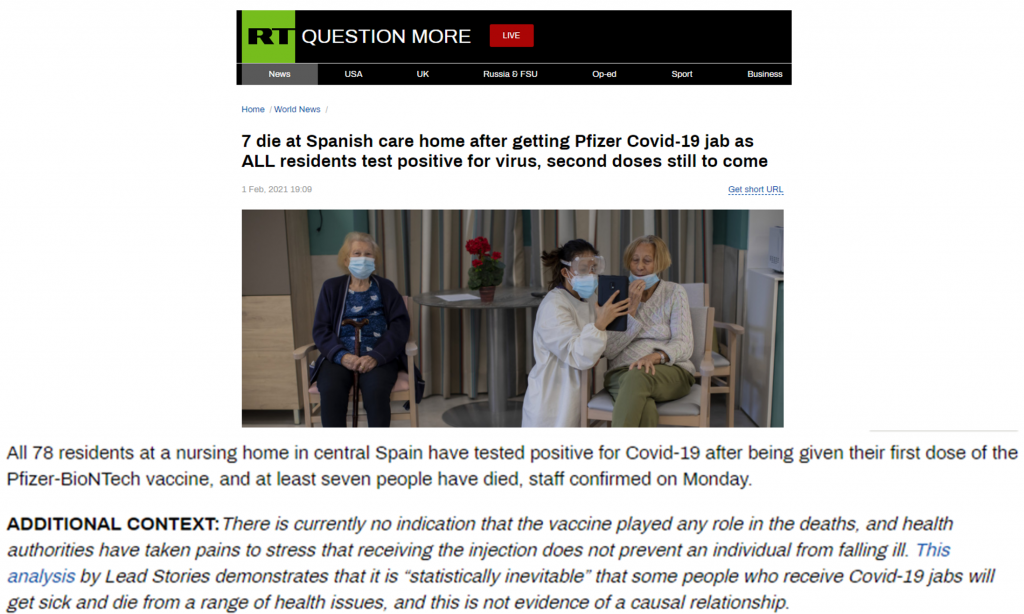
Figure 19: February 1, 2021 article that included an “additional context” disclaimer that disputed claims promoted in the article’s headline.
Beyond selective coverage of safety issues and deaths related to the administration of the Pfizer vaccine, the company itself was also portrayed as the embodiment of “Big Pharma” greed. In perhaps the most egregious example, one RT headline declared that Pfizer was “putting profits ahead of dead Mexicans.”

Figure 20: Russian media mentions of Pfizer that suggested the company was putting profits before people. Both examples above were not among the 50 most retweeted tweets mentioning Pfizer.
This was a narrative that Russia had seeded long before Pfizer emerged as Sputnik’s leading competition. Throughout the summer, Russian accounts depicted U.S. pharmaceutical companies as “profiteers” whose vaccine development efforts were driven by a thirst for financial gain. This narrative dovetailed with conspiratorial content that suggested Bill Gates (and, by extension, the United States) was using the developing world as “lab rats” and favoring rich nations over poor ones.
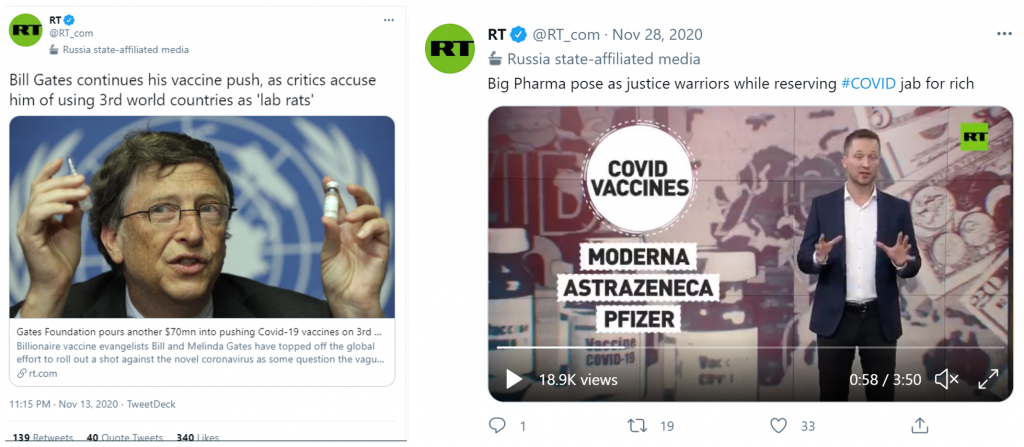
Figure 21: Russian media mentions of U.S. pharmaceutical companies as profiting off the developing world.
In contrast to Russia’s coverage of Pfizer (and, to some degree, Moderna), the most retweeted Russian tweets mentioning Sputnik V all highlighted positive developments, promoted goodwill messages, or decried alleged Russophobia and media bias in the coverage of the vaccine. Besides the obvious differences in the content of the tweets, it is also notable that the top tweets referencing Pfizer all came from state media accounts, while the top tweets mentioning Sputnik V were all from government or diplomatic accounts. Again, this underscores the different messaging strategies employed by state media and government officials, with the former providing consistently more negative coverage than the latter.

Figure 22: The most retweeted Russian tweets mentioning Sputnik V during the studied period.
Russia’s messaging around Sputnik V largely focused on proving that Russia’s vaccine was as, if not more, effective than Western vaccines, while contrasting the West’s financial motivations with Russia’s supposed humanitarian aid. A secondary point of emphasis was the argument that Western vaccines are more costly vis-a-vis Russian ones. The accuracy of these claims was complicated to assess because the prices of individual vaccines differ from deal to deal and vary from company to company (Moderna’s vaccine reportedly costs $37 per dose, for example, while Oxford-AstraZeneca’s is only $4 per jab). But regardless of the specifics, the underlying message was that Russia’s vaccine was a more cost-effective option, particularly for the developing world, than those produced by the West.
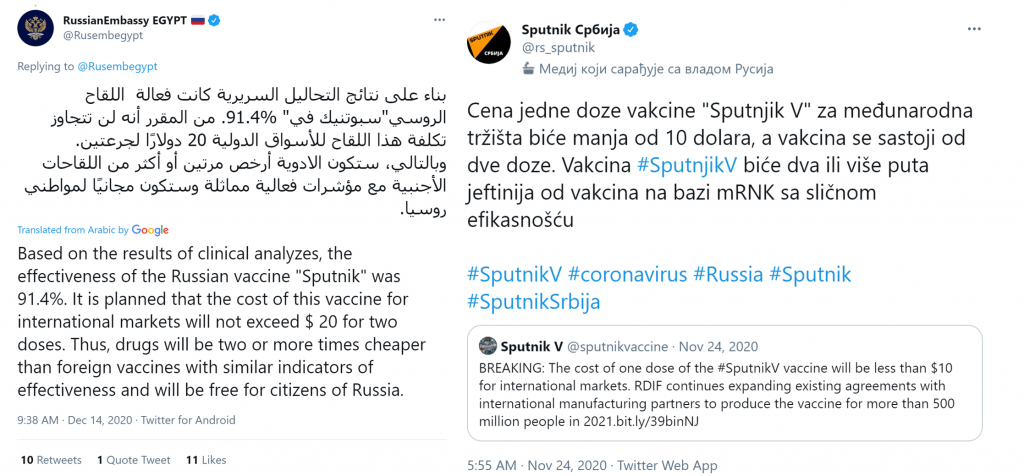
Figure 23: Russian tweets touting the cost effectiveness of the Sputnik V vaccine.
Running throughout Russia’s coverage of Sputnik V was the notion that the vaccine was being unfairly maligned by anti-Russian forces in the West. Messaging around this perceived grievance peaked in early February after positive efficacy results were published in The Lancet. Russia used those results as proof positive that early criticism of Sputnik V was based solely on Russophobia and the mainstream media’s anti-Russian bias, rather than legitimate concerns over the Russian government granting approval of the vaccine prior to the completion of human trials.

Figure 24: Russian media articles suggesting that its vaccine was the target of a “mainstream media” smear campaign.
While it is somewhat axiomatic that Russia would promote its own brand and denigrate its main competitors, state media and diplomatic messaging about Oxford-AstraZeneca revealed the true symbiosis between Russia’s interests and the outputs of its state media organs. Overall, coverage of Oxford-AstraZeneca was mixed. But context is critical here, as Russia’s coverage of the vaccine was decidedly more negative prior to the studied period. In October 2020, for example, British Foreign Secretary Dominic Raab accused Russia of running an overt and covert disinformation campaign to damage the reputation of the AstraZeneca vaccine after multiple Russian sources suggested the vaccine could turn people into monkeys due to its use of a replication-deficient chimpanzee viral vector. At that time, the British vaccine was viewed as the major competitor to Russia’s Sputnik V.
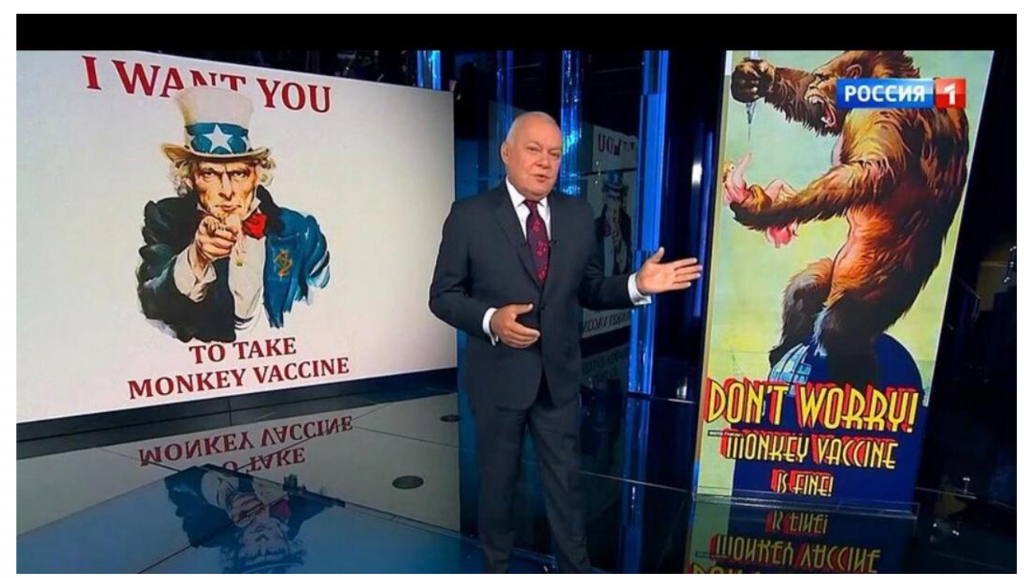
Figure 25: Pro-Kremlin media figure Dmitry Kiselyov referring to the AstraZeneca vaccine as a “monkey vaccine.”
That status changed in late November 2020, following an offer from Russia’s Sputnik V developers to share one of their viral vectors to “increase the efficacy” of the AstraZeneca vaccine. An official partnership was announced on December 11, 2020, which triggered an immediate and noticeable shift in coverage. First, the volume of tweets mentioning AstraZeneca’s vaccine increased dramatically, with the period of December 9 to January 9 seeing nearly double the number of tweets compared to November 9 through December 9 (205 versus 120). Much of the content after the announcement celebrated the partnership, touting it as a shining example of Russia’s non-politicized approach to global health. Perhaps most notably, state media outlets ceased using the term “chimpanzee” in relation to the vaccine after the announcement (there were 12 mentions of “chimpanzee” in tweets about AstraZeneca prior to the November 23, 2020 announcement).
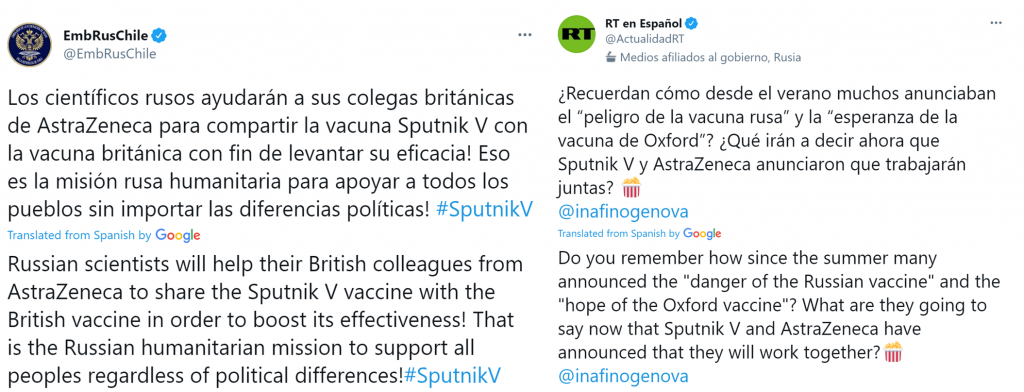
Figure 26: Russian tweets referencing the partnership between AstraZeneca and Sputnik V.
China’s coverage of specific vaccines
China’s coverage of its two most significant vaccines was as, if not more, propagandistic and jingoistic as Russia’s coverage of the Sputnik V vaccine. Of the 100 most retweeted Chinese state media and government tweets mentioning Sinopharm or Sinovac, none were coded as negative. When Chinese accounts covered negative news about one of their vaccines, including deaths of trial participants, they did so by emphasizing qualifying information, criticizing the “agendas” of those reporting on safety or efficacy issues, or minimizing unfavorable coverage. This was particularly true in the case of Sinovac’s rollout in Brazil, where poor overall efficacy results in trials were almost always presented after stating that the vaccine was 100 percent effective in preventing severe cases.

Figure 27: From left to right, a January 12, 2021 Global Times tweet downplaying poorer than expected efficacy results in Brazil, and a November 11, 2020 tweet from MFA spokesperson Hua Chunying criticizing reporting on the death of a vaccine participant in Brazil.
Like Russia, China also played up the notion that its vaccines were the target of an anti-Chinese smear campaign. This theme ranged from conspiratorial messaging about hidden agendas to more standard allegations of Western “bias against China.”
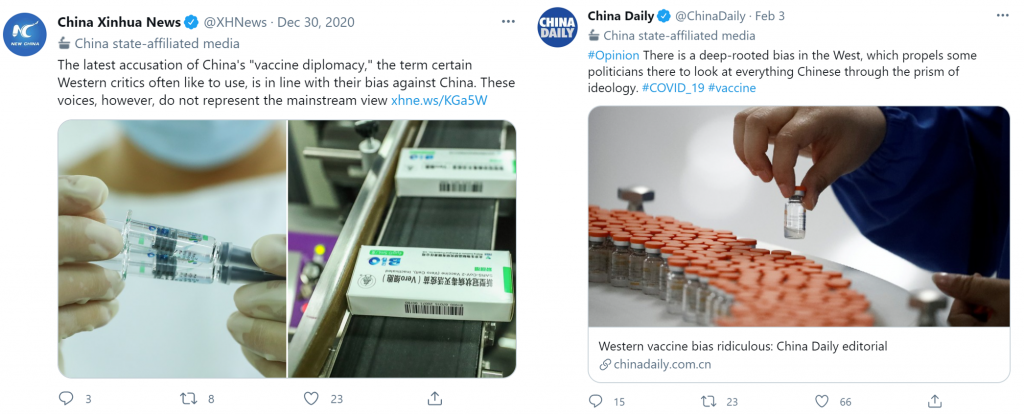
Figure 28: Chinese state media messaging accusing the West of anti-Chinese bias against Chinese vaccines.
Chinese diplomats and state media outlets also lobbed accusations at rivals closer to home. Several articles and diplomatic posts accused India and Taiwan, two countries embroiled in ongoing disputes with China, of playing “politics” with their vaccination plans.
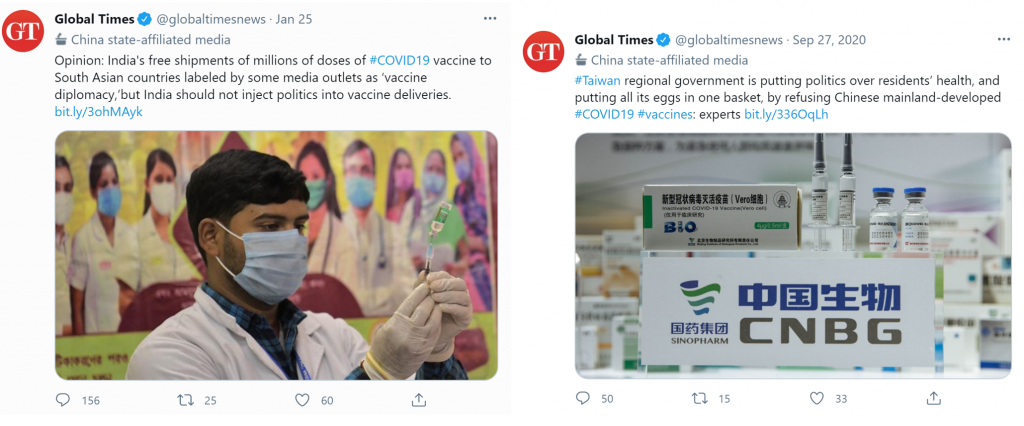
Figure 29: Global Times articles accusing India and Taiwan, two geopolitical foes, of putting politics ahead of people in their vaccination efforts.
Chinese outlets and accounts also mirrored Russian efforts to present their vaccines as the most viable options for the developing world. Unlike Russia, however, China did not focus on a cost-per-jab comparison, likely due to the fact that Sinovac is one of costliest vaccines currently available. Instead, Chinese state media and diplomats focused on two main narratives: the practicality of distributing their vaccines to the Global South, and the framing of their vaccine development as a “global public good.”
China’s practicality argument stressed that their vaccines do not require cold storage, making them more feasible for impoverished countries, those in warmer climates, and those with large rural populations that require complicated transportation logistics. In total, the term “cold” appeared in 138 Chinese tweets mentioning vaccines; by comparison, the term only appeared in 54 tweets from Russia and Iran combined. Unsurprisingly, Chinese accounts targeting audiences in the Global South were the most active messengers on this front.
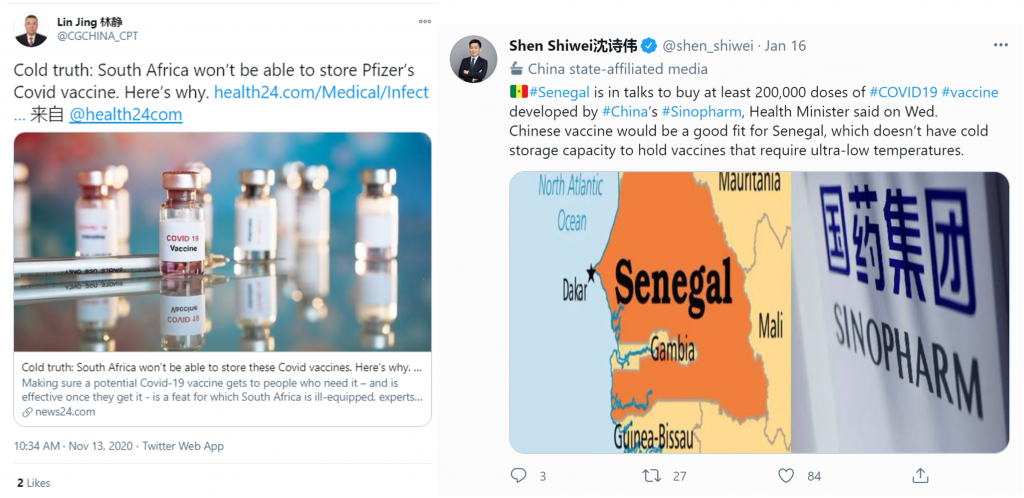
Figure 30: Chinese state-affiliated accounts mentioning cold storage issues in Africa.
But the most prominent theme in Chinese messaging was that their vaccine initiatives are being undertaken for the “global public good” rather than for profit, which was implicitly or explicitly presented as the West’s primary motivation. In the studied period, Chinese diplomat and state media accounts used the term “global public good” 154 times in tweets mentioning vaccines.
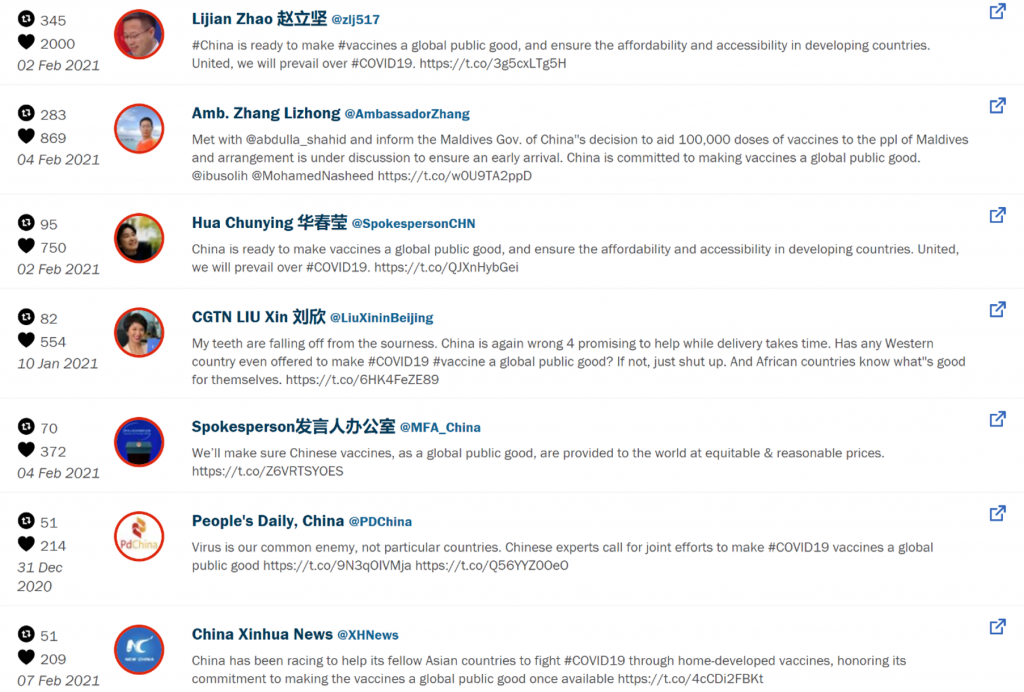
Figure 31: Most retweeted tweets from Chinese accounts referencing vaccines as a “global public good.”
While China’s coverage of its own vaccines was biased and propagandistic, it provided far more balanced coverage of Western-produced vaccines than Russia or Iran. The only vaccine to receive more unfavorable than favorable coverage was Pfizer’s; although, even the reporting on Pfizer was roughly split between positive and negative coverage.

Figure 32: The number of tweets coded as positive/neutral and negative from Chinese-affiliated accounts mentioning one of the six surveyed vaccines.
Chinese state media outlets were also far less likely than Russian ones to cover reports of deaths related to the Pfizer vaccine (see figure 17). Coverage of allergic reactions was also less sensationalized and generally avoided the deceptive headlines that characterized Russian reporting. There were, however, exceptions to this rule. State-owned tabloid Global Times and its editor-in-chief, Hu Xijin, were characteristically provocative in their coverage of Pfizer, suggesting that approval of the Pfizer vaccine was driven by economics and politics. CGTN news anchor Liu Xin also suggested that deaths related to Pfizer were being covered up by a complicit Western media, fitting with their broader narrative of Western biases and “double standards.”

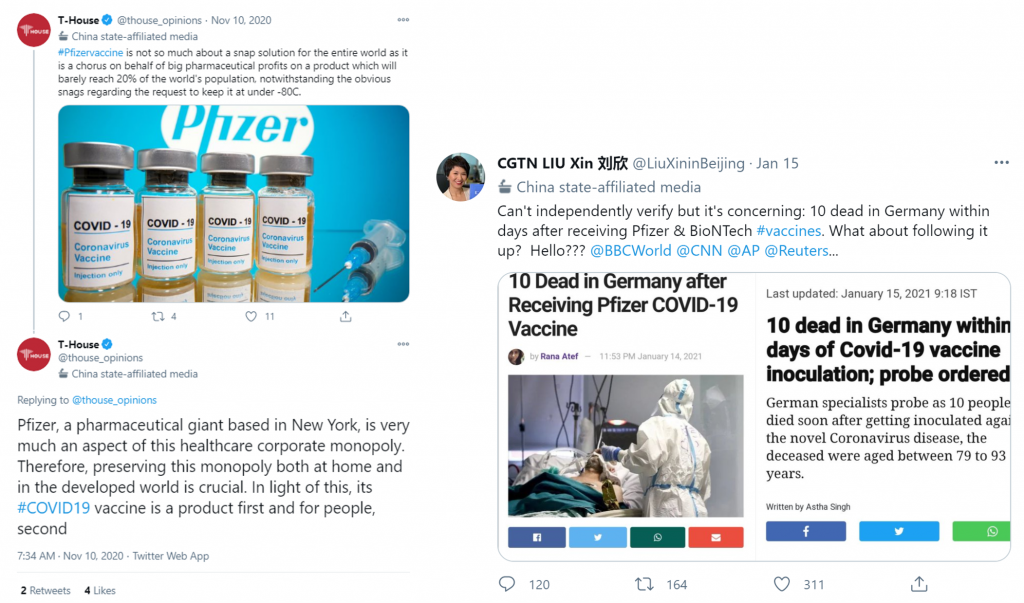
Figure 33: Examples of Chinese state media’s coverage of Pfizer, as well as CGTN anchor Liu Xin’s suggestion that Western media outlets were not covering deaths related to the Pfizer vaccine.
Unlike Russian state media coverage, reporting on both Moderna and AstraZeneca was overwhelmingly neutral or positive. Moderna received particularly positive reviews, with one analyst rating it as the “best vaccine option currently.” When Moderna received unfavorable coverage, it was generally in the context of its higher-than-average price and its requirement of cold storage.

Figure 34: Examples of positive and negative coverage of Moderna from Chinese state media and diplomats.
As indicated in figure 12, China provided limited coverage of the Sputnik V vaccine; although, the coverage it did provide was overwhelmingly positive.
Iran’s coverage of specific vaccines
Iranian state media and diplomats provided far less coverage of vaccines than their Russian and Chinese counterparts. Although this was largely a function of Iran’s less energetic use of Twitter overall, the absence of any positive developments about Iranian-produced vaccines until late December (mid-way through the studied period) likely contributed to a reduced demand for Iranian diplomats and state media outlets to promote Iran’s diplomatic and economic interests vis-à-vis vaccine-related messaging. (During the studied period, monitored Iranian accounts posted roughly one-third the number of tweets of Chinese accounts and one-fourth the number of tweets of Russian accounts.)
Because of Iran’s reliance on foreign vaccines, coverage of specific vaccines by Iranian state media and diplomatic Twitter accounts appeared closely tied to the prospects for those vaccines to be used in Iran. This was true even of Western vaccines, which received starkly different coverage depending on their import prospects.
Iranian accounts, however, were the most active cheerleaders for Russia’s Sputnik V vaccine, which Iran greenlit for internal use in early February. Coverage emphasized the efficacy of the drug, as well as the strength of bilateral relations between the two countries. The tone at times bordered on sycophancy, and the volume of tweets increased the last day of the studied period (February 9, 2021), when the first batch of the vaccine arrived in Iran.
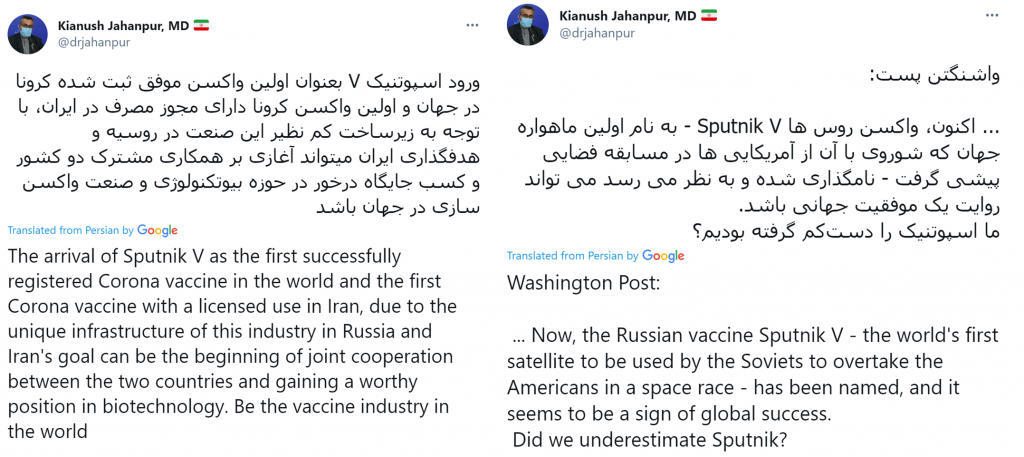
Figure 35: Iranian government messaging mentioning Sputnik CV. Note that the second tweet occurred on February 10, 2021, outside the studied period.
Interestingly, Iran, which also purchased the Sinovac vaccine, provided very little coverage of either of the two Chinese vaccines, but the coverage it did provide was universally positive. This was perhaps due to issues translating the Chinese brand names from Arabic to English; although, the combination of “vaccine” and “Chinese” only returned 24 total results, as well.
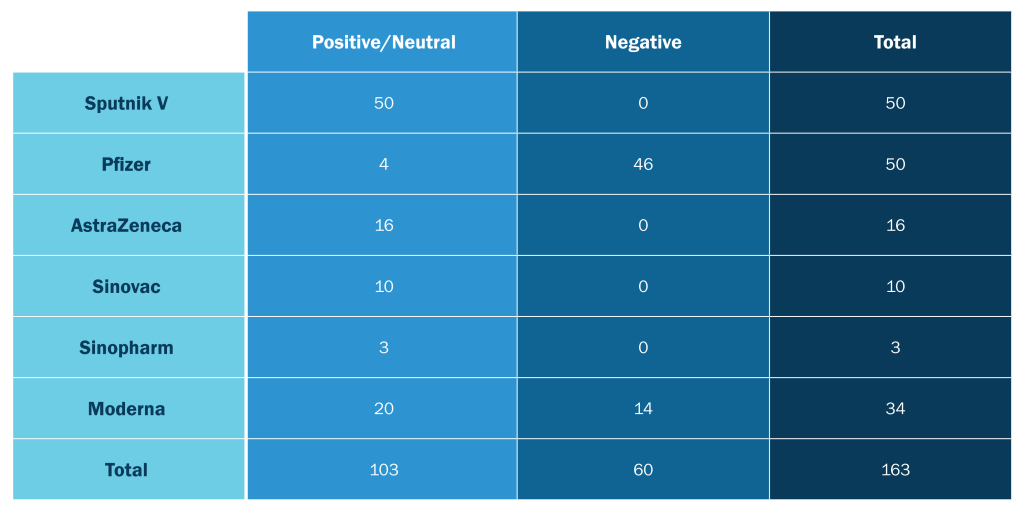
Figure 36: The number of tweets coded as positive/neutral and negative from Iranian-affiliated accounts mentioning one of the six surveyed vaccines.
Consistent with Russian and Chinese outputs, Pfizer received by far the most, and the most negative, coverage of the three Western-made vaccines. While 92 percent of the surveyed tweets mentioning Pfizer were negative, coverage of the vaccine was comparatively balanced between November and mid-December when Pfizer was viewed as a potential solution for Iran’s vaccine needs. Coverage began to shift after Iranian officials declared that Pfizer was not a viable option for the country due to issues with cold storage. As evidenced in the example below, this came after denials that cold storage would be an issue.
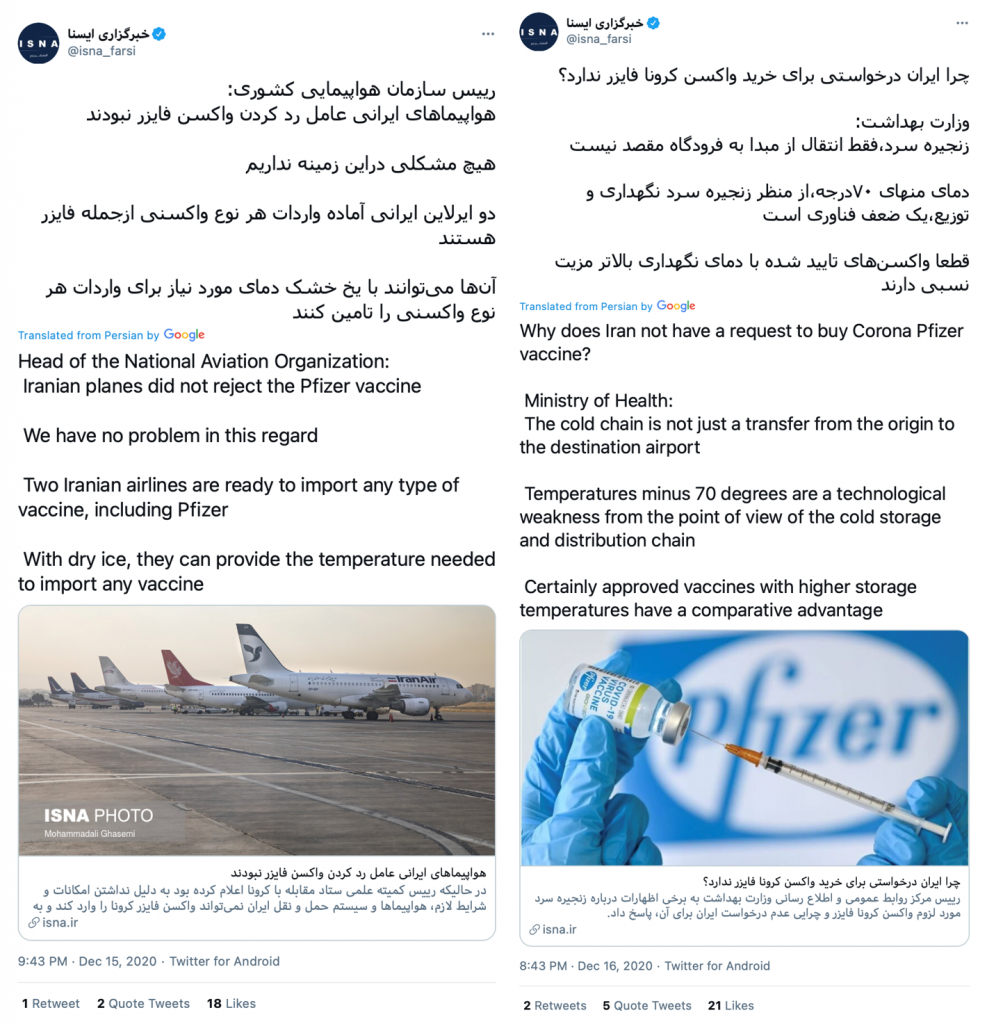
Figure 37: ISNA articles from December 16 and 17 reflecting denials and then rationale for why Pfizer’s vaccines could not be imported to Iran. Coverage of the vaccine took a negative turn after the announcement.
Whether the announcement was the direct cause, reporting on Pfizer soured as its prospects within Iran dimmed. But coverage turned universally negative after the supreme leader tweeted on January 8, 2021, that U.K. and U.S. vaccines would be banned within Iran because they are “untrustworthy” and possible vehicles to “contaminate” other nations—a tweet that was subsequently removed by Twitter. Nine of the ten most retweeted Iranian tweets mentioning Pfizer, all of which were negative, were posted after the supreme leader announced the ban.
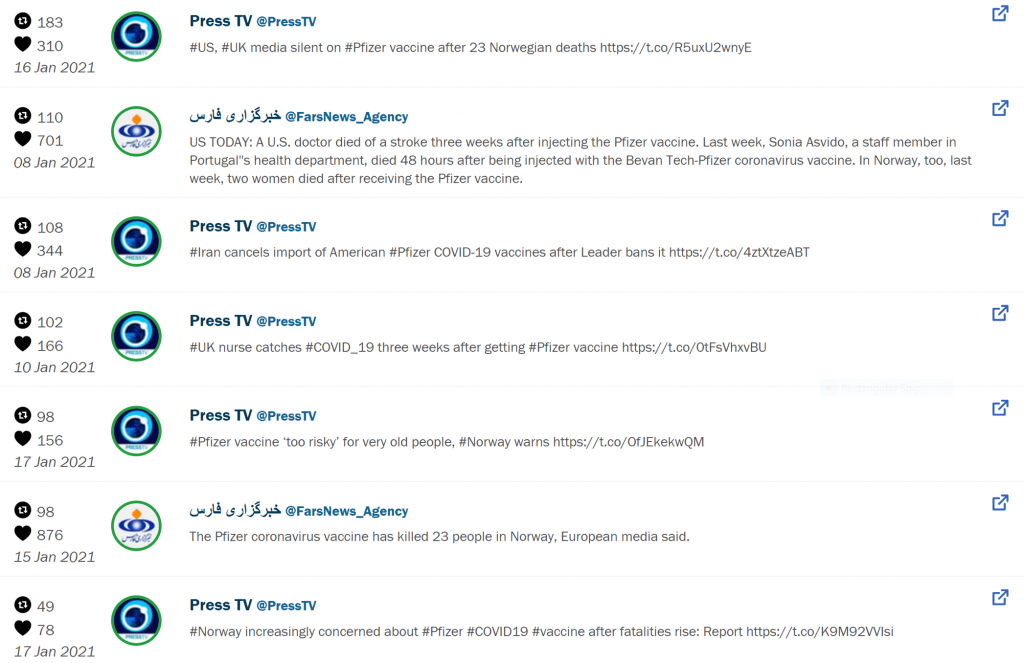
Figure 38: Sample of the most retweeted Iranian tweets mentioning Pfizer.
Most of the specific narratives Iran promoted about Pfizer echoed those pushed by Russia and China, though the rhetoric was often more exaggerated and misleading. For example, a Fars News report on January 15, 2021 stated that the Pfizer vaccine had killed 23 people in Norway, a claim that was obviously false. Another headline from the Arabic-language Fars News account blared that six people had been killed by the Pfizer vaccine in the United States. While it is possible that the word “killed” was a translation issue, the headline is nonetheless a wild distortion of reality, given that four of the six people who died during Pfizer’s vaccine trial had received a placebo and that authorities determined the other two died of causes unrelated to the vaccine. These tweets seem to represent clear cases of misinformation, and arguably should have been removed under Twitter’s public health misinformation policy.
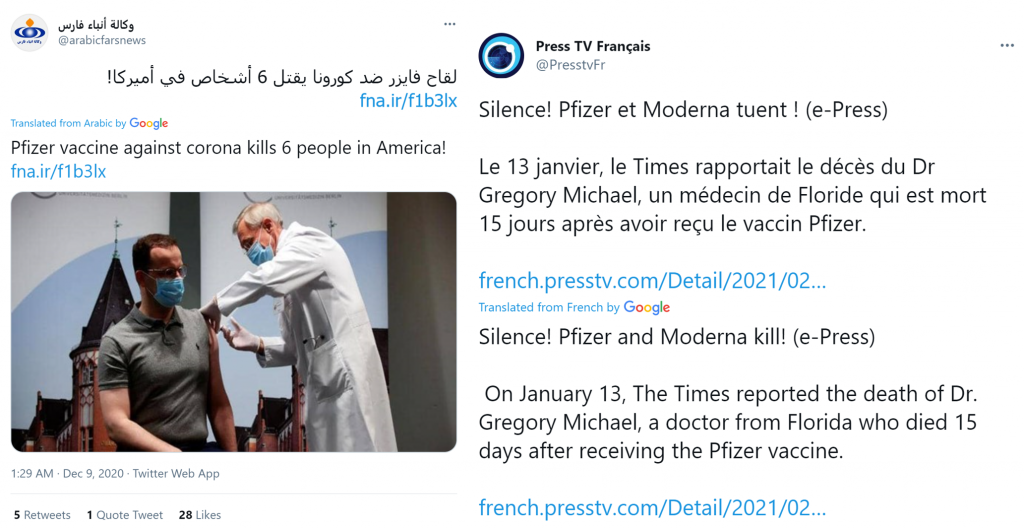
Figure 39: Misleading, if not inaccurate, tweets from Iranian state media outlets suggesting the Pfizer vaccine was responsible for the deaths of recipients.
There were also a few tweets that noted that executives at Pfizer (and Moderna) are “Zionists”—a seeming ploy to discredit the vaccine on anti-Semitic grounds.
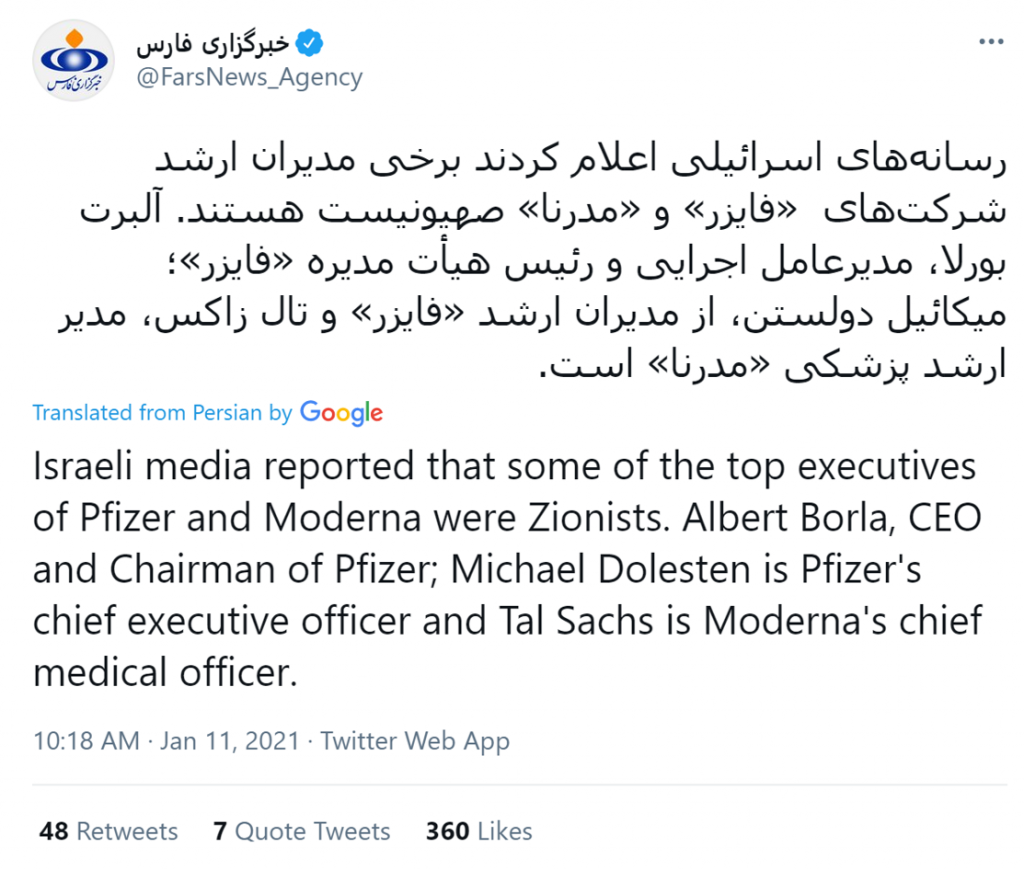
Figure 40: Fars News tweet noting “Zionist” executives at Pfizer and Moderna.
Given the supreme leader’s blanket ban of U.K. and U.S. vaccines, it is, on the surface, surprising that coverage of AstraZeneca was almost entirely positive. Iran, however, is importing AstraZeneca—an inconsistency Iranian state media and diplomats went to great lengths to justify by framing the vaccine as Swedish, not British. Note, the vaccine was regularly referred to as a British vaccine prior to the supreme leader’s ban.

Figure 41: Two examples of Iranian state media outlet IRNA justifying the import of the Oxford-AstraZeneca vaccine on the grounds that it is made in Sweden.
Control group coverage of specific vaccines
As noted, one of the prominent narratives peddled by Russian, Chinese, and, to a lesser degree, Iranian accounts was that Western coverage of vaccines has been politicized and biased. Accounts and outlets from all three countries suggested that Western media outlets hid, minimized, or otherwise manipulated evidence of safety concerns related to Western vaccines. Russia and China also alleged a double standard in reporting on Russian and Chinese vaccines, suggesting that Western media outlets either ignored or demonized the vaccines because of Russophobic or anti-Chinese sentiments.
These claims are not supported by our survey; although, it should be noted that the 15 global media accounts selected for our control group are not a representative sample of worldwide media outputs. Indeed, there have been several negative reports in prominent Western media outlets that were not captured by our survey. The timing of our survey also likely influenced the results, as much of the criticism of Sputnik V occurred after its initial launch in August, before the studied period.
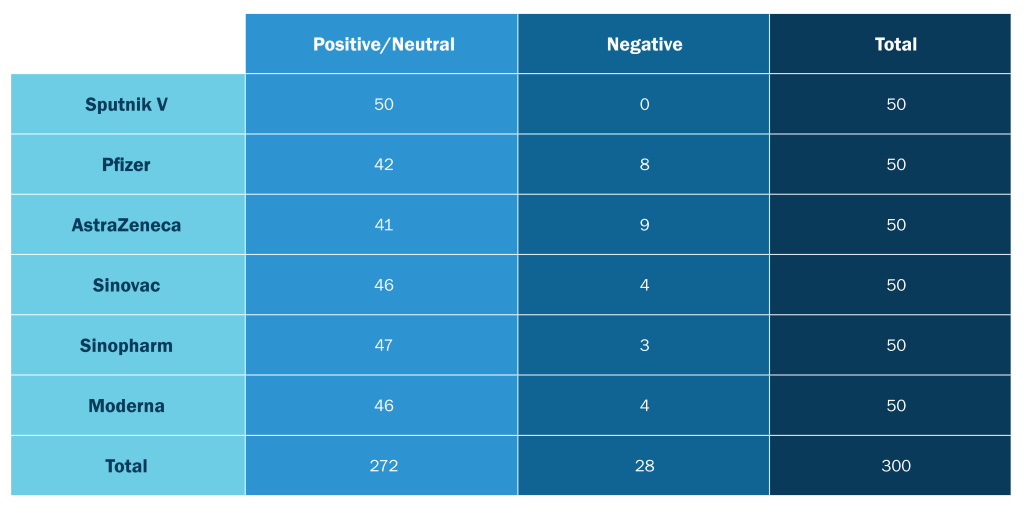
Figure 42: The number of tweets coded as positive/neutral and negative from the control group of global media accounts mentioning one of the six surveyed vaccines.
However, the fact that Pfizer, AstraZeneca, and Moderna received more negative coverage in our survey than Russian and Chinese vaccines suggests that these claims are, at the very least, exaggerated. None of the 50 most retweeted tweets mentioning Sputnik V were negative, and a review of the 23 tweets mentioning Sputnik V from the U.S.-government funded Radio Free Europe/Radio Liberty found that only four (17 percent) were negative (none of these tweets, obviously, were among the 50 most retweeted tweets in our dataset). Some articles even promoted Chinese and Russian vaccines over their Western rivals.

Figure 43: A February 4, 2021 RFE/RL article contradicting Russian and Chinese claims of an anti-Russian and anti-Chinese vaccine agenda in the Western press.
Additionally, instances that the Western media was accused of ignoring—most notably the deaths of vaccine recipients in Norway—were covered, though with far more context and qualifying information.
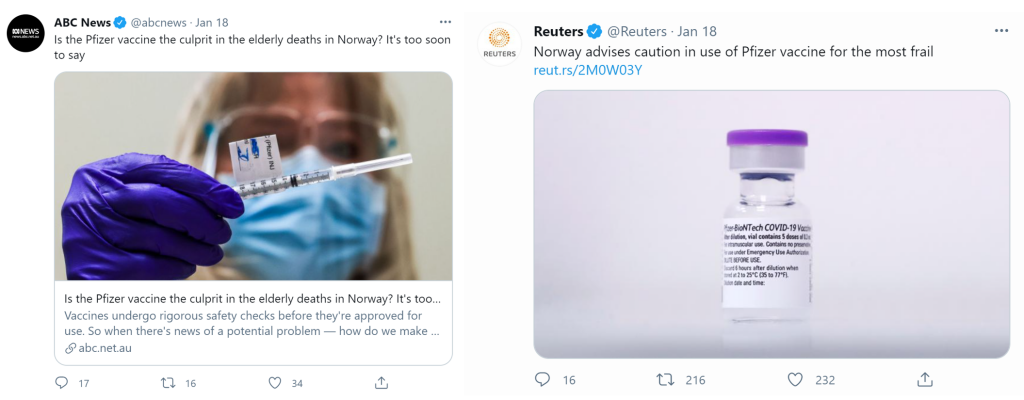
Figure 44: Coverage from Reuters and Australia’s ABC News covering deaths in Norway—an event Russia, China, and Iran accused the Western press of “ignoring.”
While hardly conclusive, the limited sampling of global coverage of vaccines suggests that the Russian and Chinese claims of mainstream media bias is more a continuation of a favored state media narrative than a reflection of reality.
Conclusion
ASD’s analysis uncovered sometimes subtle and sometimes stark differences in how state media and diplomats from Russia, China, and Iran cover specific vaccines. A universal feature of their reporting, however, was an effort to convince audiences, both at home and abroad, that their domestically produced vaccines (or, in the case of Iran, vaccines approved for domestic use) were safer, more effective, more practical, and more affordable than vaccines produced by their Western competitors. Coverage of these issues often tied into tropes that are commonly woven into each country’s coverage of a range of topics, including claims of mainstream media bias, xenophobia, and the failures of capitalism and democratic systems.
These themes, implicitly and explicitly, were peppered throughout each country’s vaccine-related messages. They also formed the backbone of Russia and China’s pitch to developing countries. China, for example, emphasized that its vaccines are “global public goods” that are more practical for distribution in the Global South (as opposed to Western vaccines that are created for profit, require cold storage, and are being prioritized for the “world’s rich”). Russia emphasized the cost-per-jab advantage of Sputnik V, as well as the safety and efficacy of their vaccine. Undergirding it all was the common refrain that Chinese and Russian vaccines were being ignored or slandered by the corrupt mainstream media or malign Western agendas—a claim that our research suggests is inflated if not entirely inaccurate.
While Russia and China’s promotion of their domestically produced vaccines was expected, the three studied countries’ coverage of surveyed Western vaccines revealed more nuance than was anticipated. Contrary to the belief that Russia, China, and Iran have indiscriminately targeted all Western vaccines with negative messaging campaigns, our data indicates that their information strategies represent a balancing of public health needs, economic pursuits, geopolitical posturing, and other strategic interests.
Finally, our analysis also revealed that while there were few instances of any of the three countries engaging in outright disinformation, their reporting on safety issues—especially related to the Pfizer vaccine—was frequently misleading. And these half-truths and exaggerations, repeated as often as they were, were arguably just as damaging as falsehoods, and certainly harder to fact-check and moderate. This suggests that more attention should be given to the study and mitigation of mal-information—information that is technically true but that is intentionally presented without context—as the effect of such information is clear, but the remedies are less obvious.
The views expressed in GMF publications and commentary are the views of the author alone.
- Disclosure: The article from The New York Times cites an author of this report.
- Note: We use the term “Western” as a catch-all adjective to describe vaccines produced by Moderna, Pfizer, and Oxford-AstraZeneca. As discussed later in this paper, this is an imperfect grouping, as there was little uniformity in the coverage of vaccines from specific manufacturers. Researchers focused only on the three vaccines approved by the European Union, and thus did not specifically query Johnson & Johnson or other Western vaccines (though these were likely captured in our more generic searches for tweets and articles mentioning the words “vaccine” or “vaccination”).
- CGTN.com, Xinhuanet.com, Globaltimes.cn, en.people.cn (People’s Daily), Chinadaily.com.cn
- RT.com, Sputniknews.com, RBTH.com (Russia Beyond the Headlines), TASS.cpm
- PressTV.com, enfarsnews.ir (Fars News Agency), en.irna.ir (Islamic Republic News Agency)
- CGTN and CGTN America YouTube channels
- RT and RT America YouTube channels
- For our global media control group, ASD monitored the Twitter accounts of the following state media and international media outlets: @AJEnglish, Abcnews (Australia), @bbcnews, @cbcnews, @France24_en, @i24NEWS_EN, @NHKWORLD_News, @RFERL, @dwnews, @VOANews, @trtworld, @telesurenglish, @KBSWorldTV, @AlArabiya_Eng, @cnni, @SABCNews, @euronews, @Reuters




